Abstract
The author discusses the meaning of insecticide resistance and the manner in which it should be detected and measured. From some recent data he gives a number of examples of measurements of resistance in mosquitos of different species in various areas. He then proceeds to a speculative discussion on the way in which insecticide resistance arises, whether it can be prevented and overcome, its importance in the past and at present, and finally its future prospects.
Full text
PDF
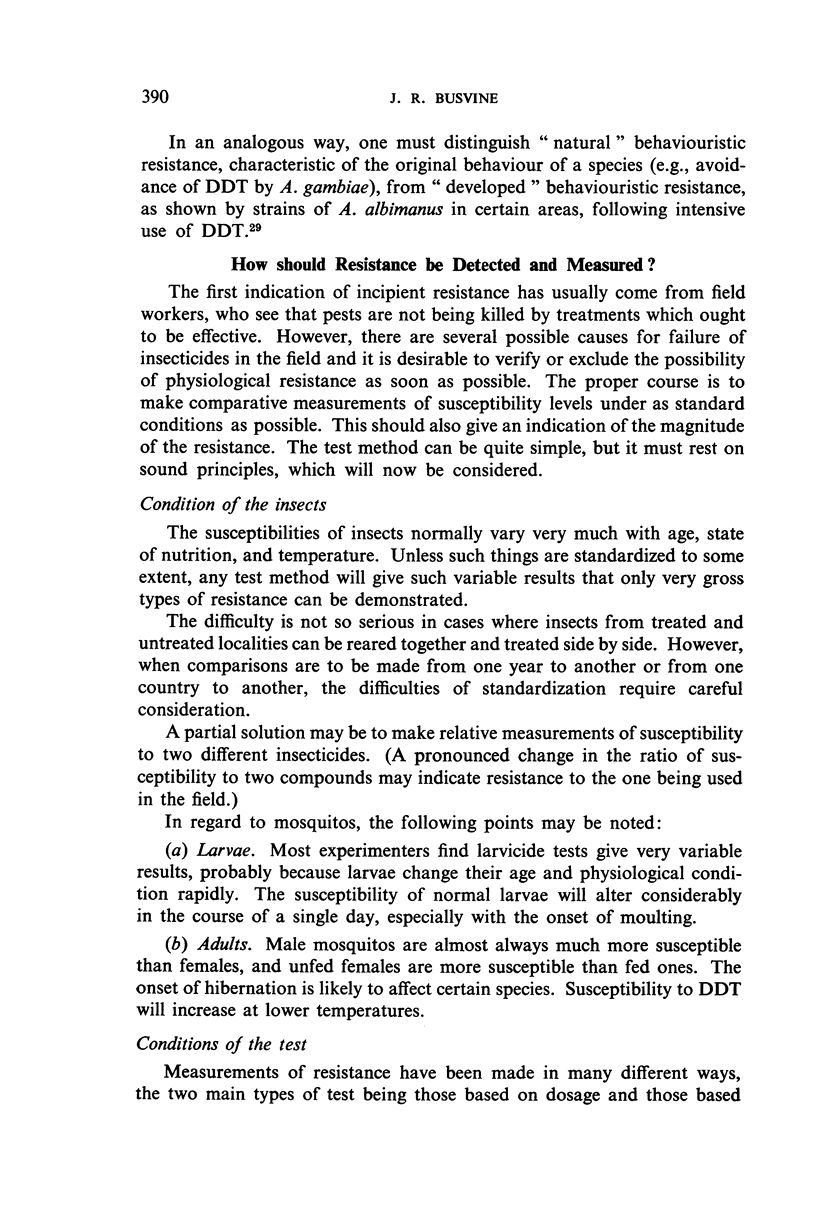

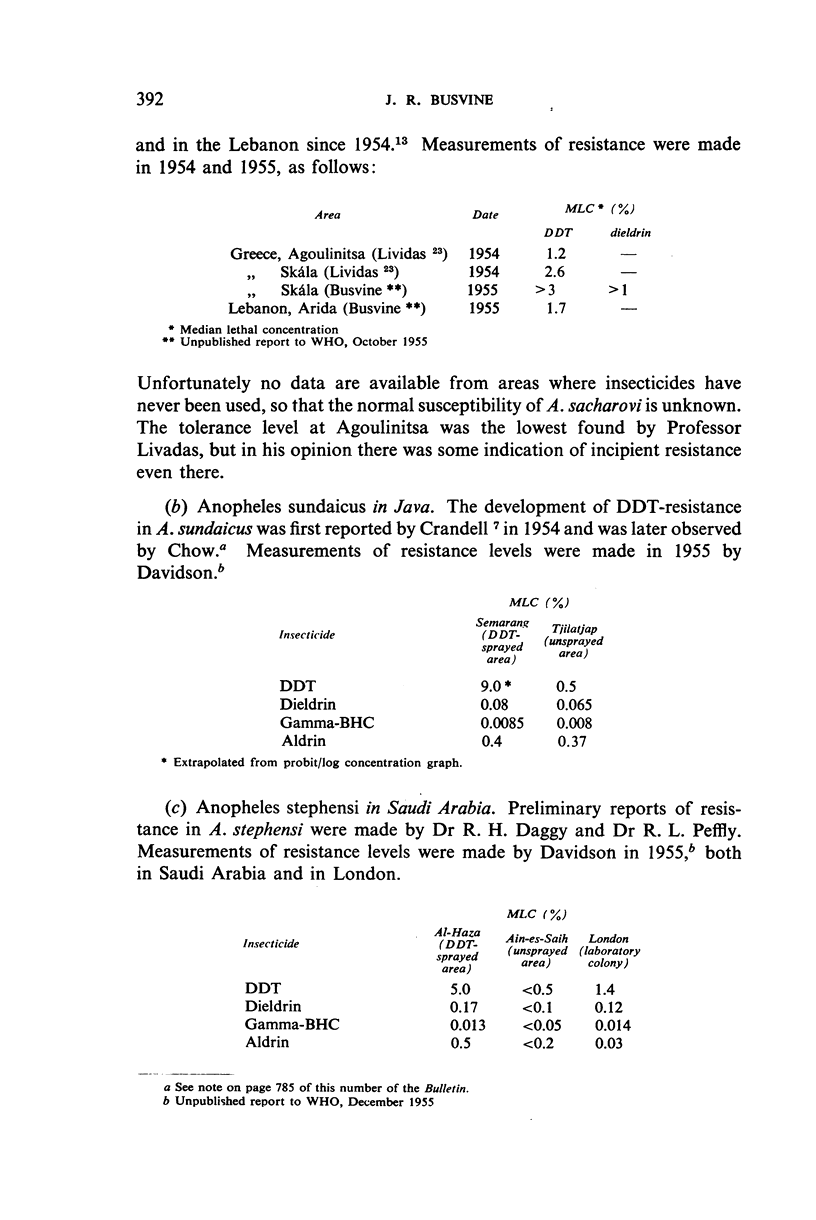
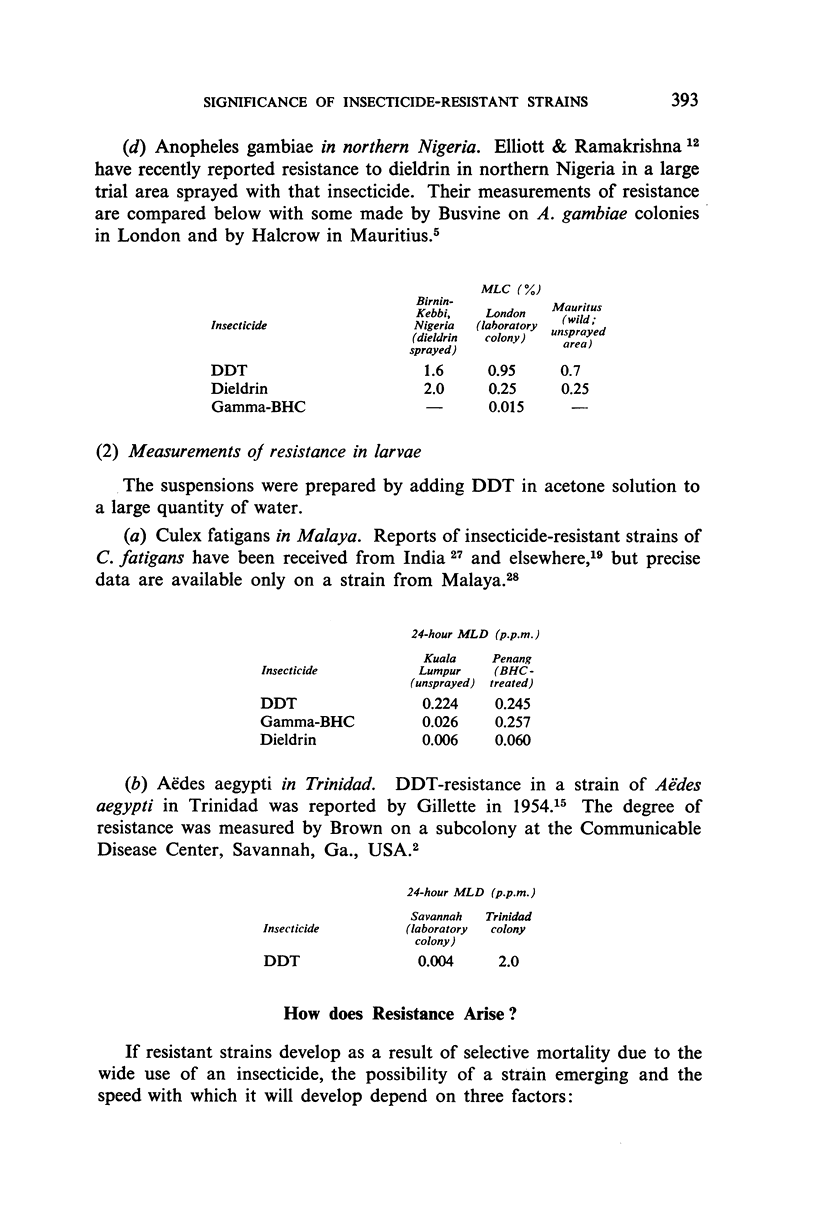
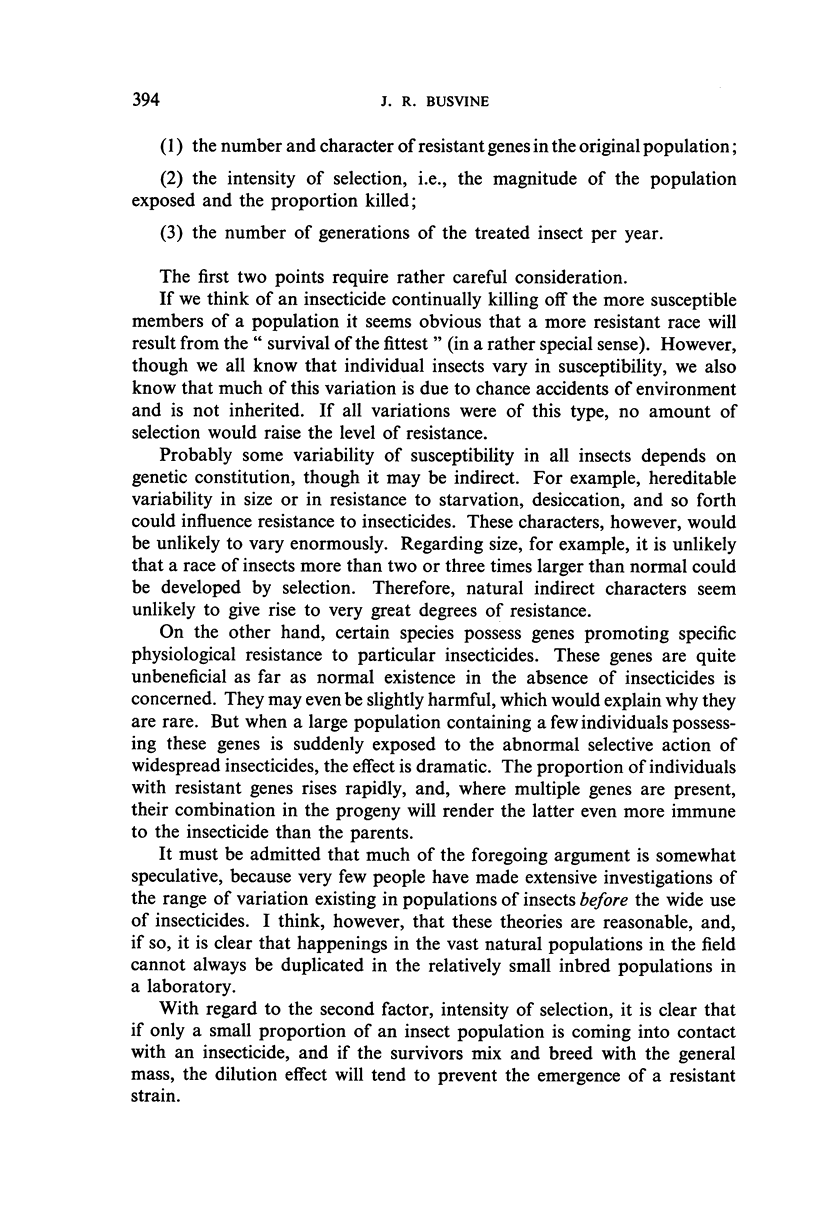
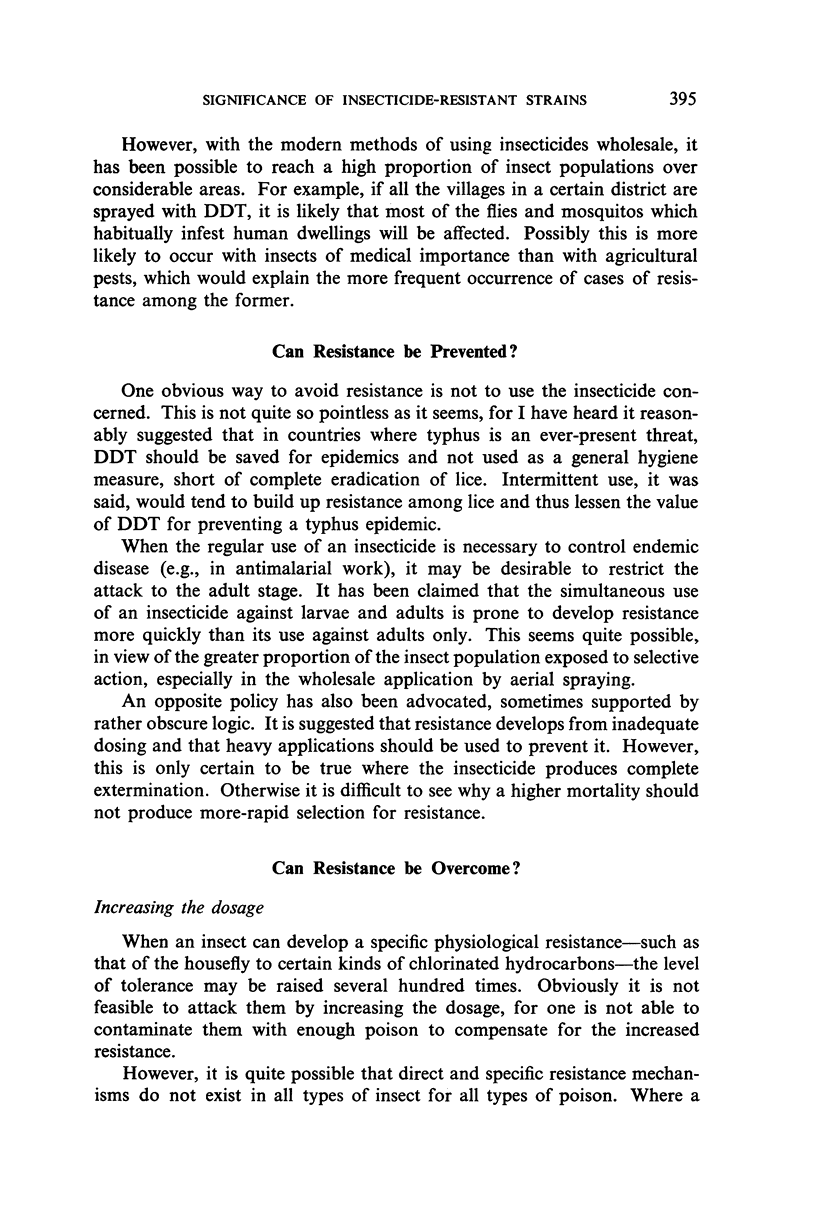
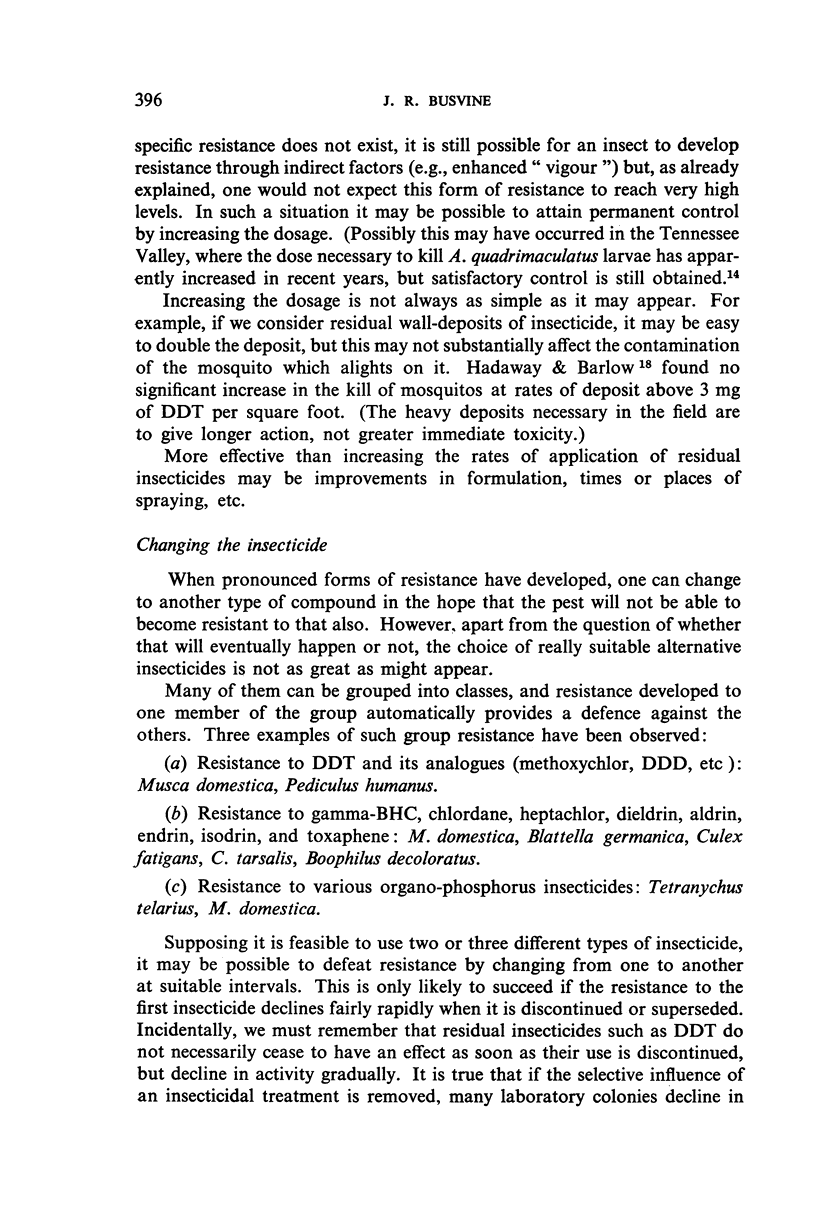
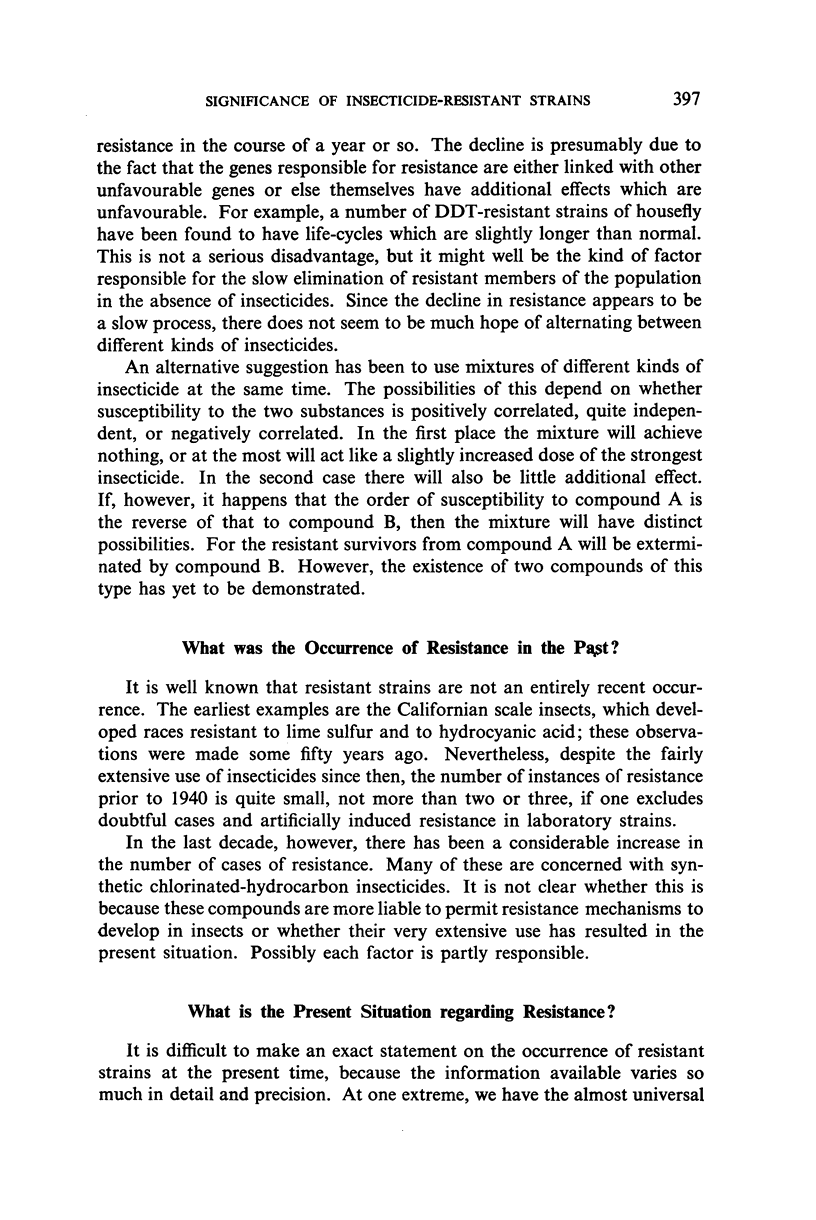
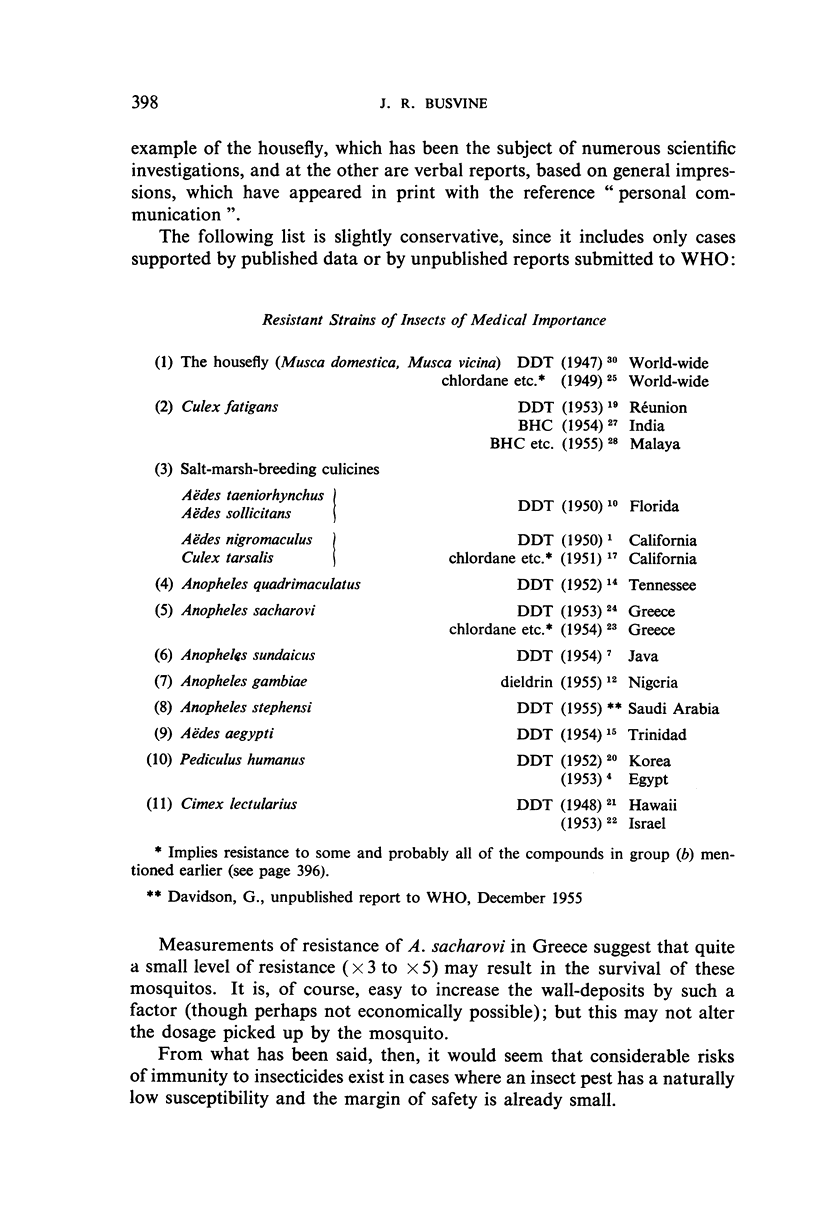
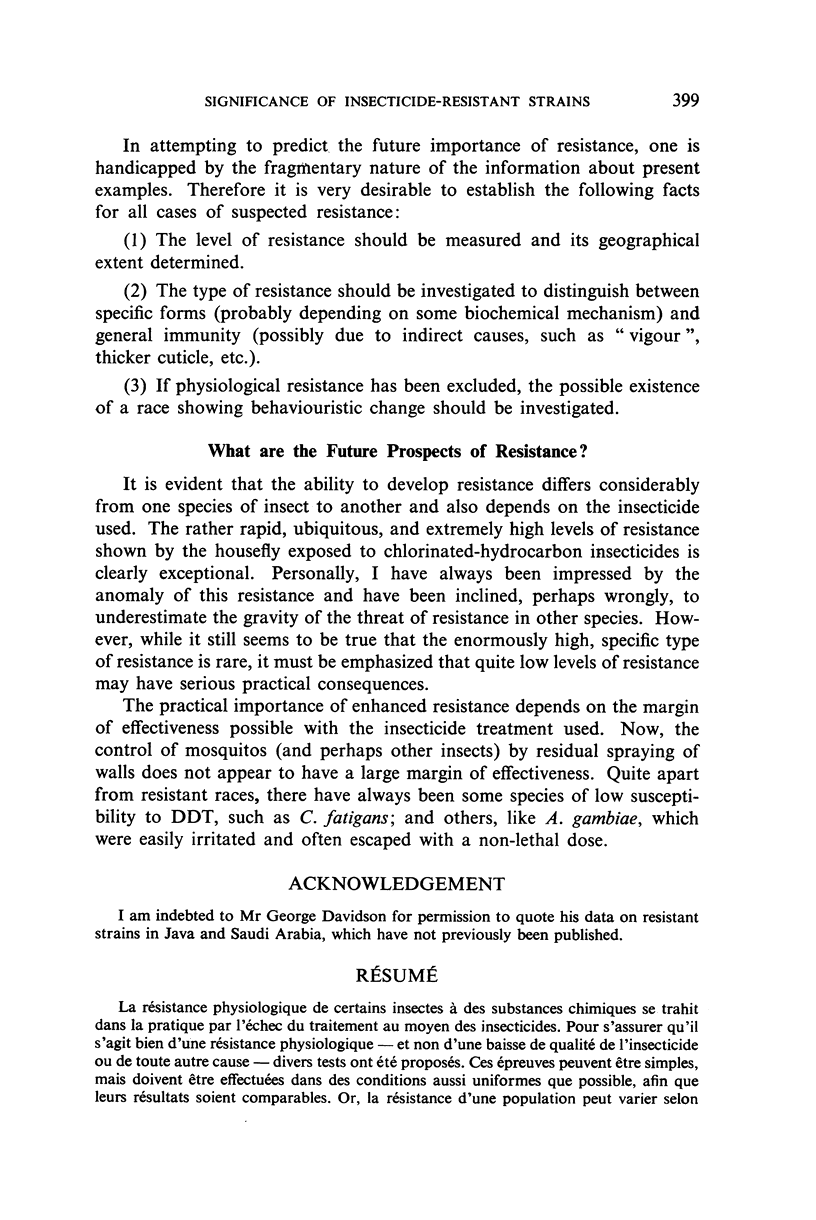
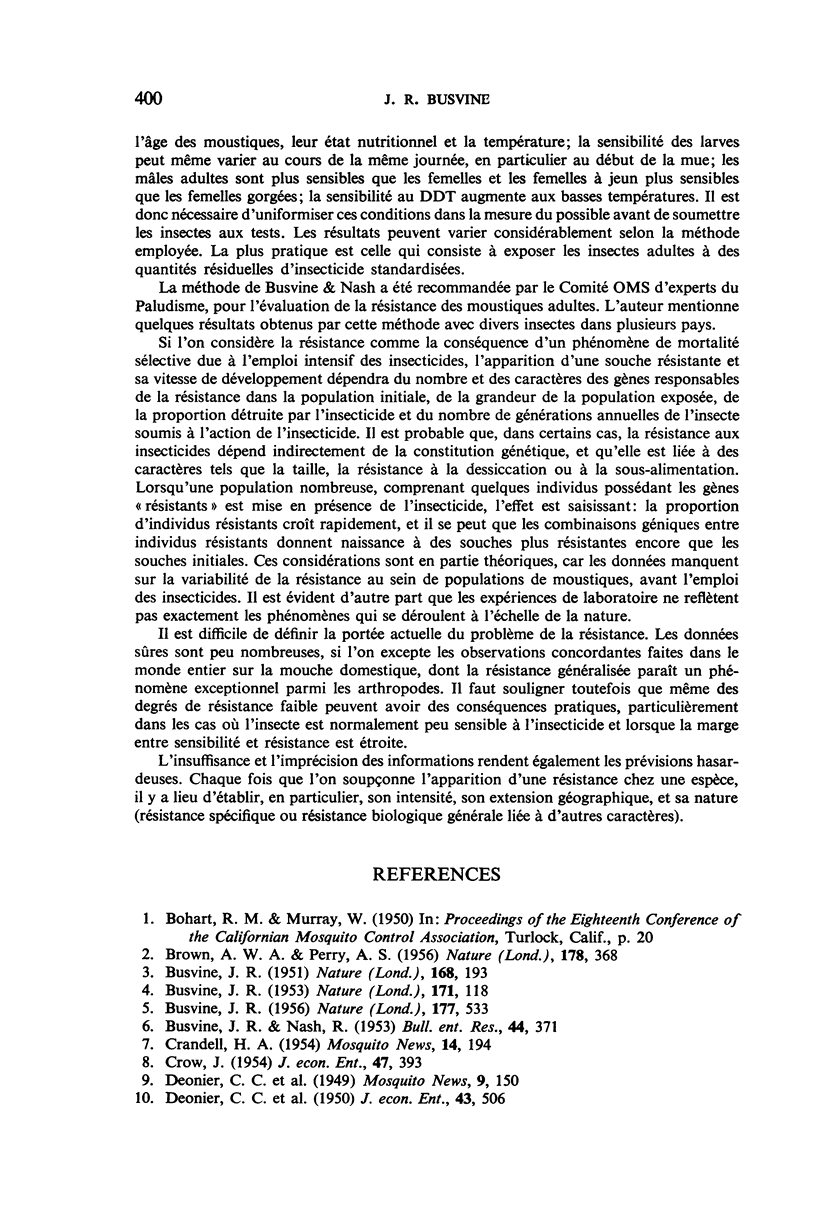
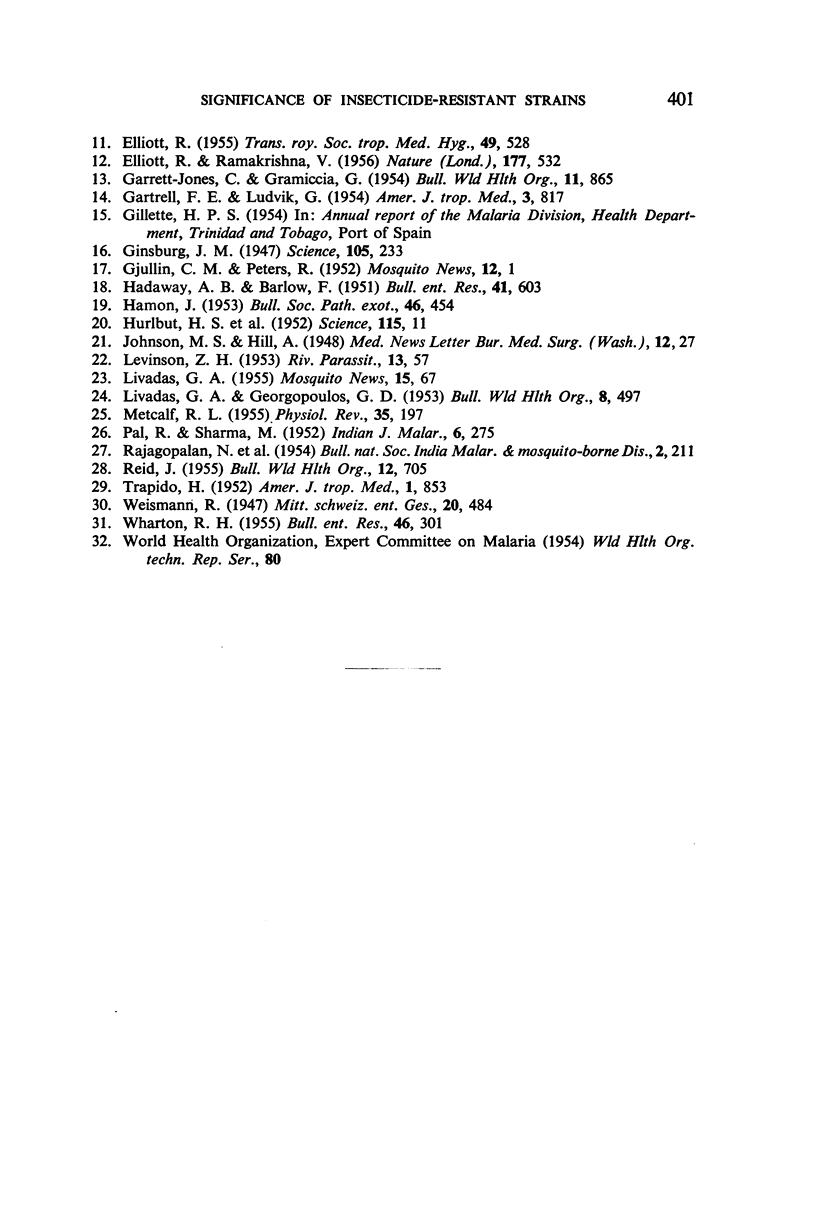
Selected References
These references are in PubMed. This may not be the complete list of references from this article.
- BROWN A. W., PERRY A. S. Dehydrochlorination of DDT by resistant houseflies and mosquitoes. Nature. 1956 Aug 18;178(4529):368–369. doi: 10.1038/178368b0. [DOI] [PubMed] [Google Scholar]
- BUSVINE J. R. Forms of insecticide resistance in houseflies and body lice. Nature. 1953 Jan 17;171(4342):118–119. doi: 10.1038/171118a0. [DOI] [PubMed] [Google Scholar]
- BUSVINE J. R. Mechanism of resistance to insecticide in houseflies. Nature. 1951 Aug 4;168(4266):193–195. doi: 10.1038/168193a0. [DOI] [PubMed] [Google Scholar]
- BUSVINE J. R. Normal resistance-levels of Anopheles gambiae to various insecticides. Nature. 1956 Mar 17;177(4507):533–534. doi: 10.1038/177533a0. [DOI] [PubMed] [Google Scholar]
- DEONIER C. C., RAUN E. S. A comparison of DDT and other new insecticides for mosquito control. Mosq News. 1949 Dec;9(4):150–152. [PubMed] [Google Scholar]
- ELLIOTT R. Larvicidal control of peridomestic mosquitoes. Trans R Soc Trop Med Hyg. 1955 Nov;49(6):528–542. doi: 10.1016/0035-9203(55)90024-9. [DOI] [PubMed] [Google Scholar]
- ELLIOTT R., RAMAKRISHNA V. Insecticide resistance in Anopheles gambiae Giles. Nature. 1956 Mar 17;177(4507):532–533. doi: 10.1038/177532a0. [DOI] [PubMed] [Google Scholar]
- GARRETT-JONES C., GRAMICCIA G. Evidence of the development of resistance to DDT by Anopheles sacharovi in the Levant. Bull World Health Organ. 1954;11(4-5):865–883. [PMC free article] [PubMed] [Google Scholar]
- GARTRELL F. E., LUDVIK G. F. The role of insecticides in the TVA malaria control program. Am J Trop Med Hyg. 1954 Sep;3(5):817–820. doi: 10.4269/ajtmh.1954.3.817. [DOI] [PubMed] [Google Scholar]
- Ginsburg J. M. Comparative Toxicity of DDT Isomers and Related Compounds to Mosquito Larvae and Fish. Science. 1947 Feb 28;105(2722):233–234. doi: 10.1126/science.105.2722.233. [DOI] [PubMed] [Google Scholar]
- HURLBUT H. S., ALTMAN R. M., NIBLEY C., Jr DDT resistance in Korean body lice. Science. 1952 Jan 4;115(2975):11–12. doi: 10.1126/science.115.2975.11-a. [DOI] [PubMed] [Google Scholar]
- LIVADAS G. A., GEORGOPOULOS G. Development of resistance to DDT by Anopheles sacharovi in Greece. Bull World Health Organ. 1953;8(4):497–511. [PMC free article] [PubMed] [Google Scholar]
- METCALF R. L. Physiological basis for insect resistance to insecticides. Physiol Rev. 1955 Jan;35(1):197–232. doi: 10.1152/physrev.1955.35.1.197. [DOI] [PubMed] [Google Scholar]
- TRAPIDO H. Modified response of Anopheles albimanus to DDT residual house spraying in Panama. Am J Trop Med Hyg. 1952 Sep;1(5):853–861. doi: 10.4269/ajtmh.1952.1.853. [DOI] [PubMed] [Google Scholar]


